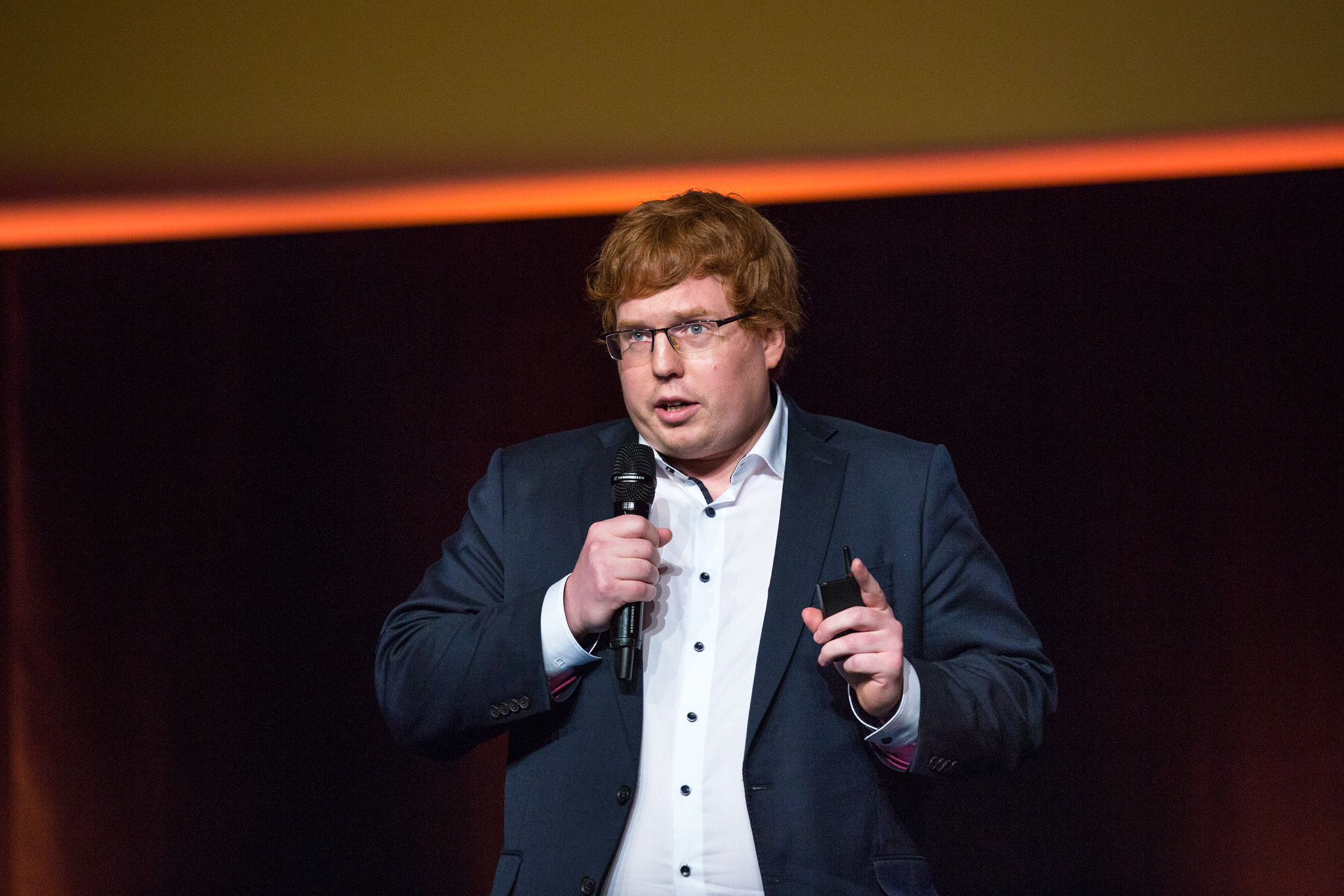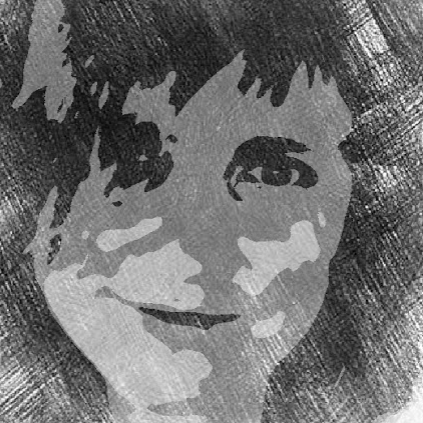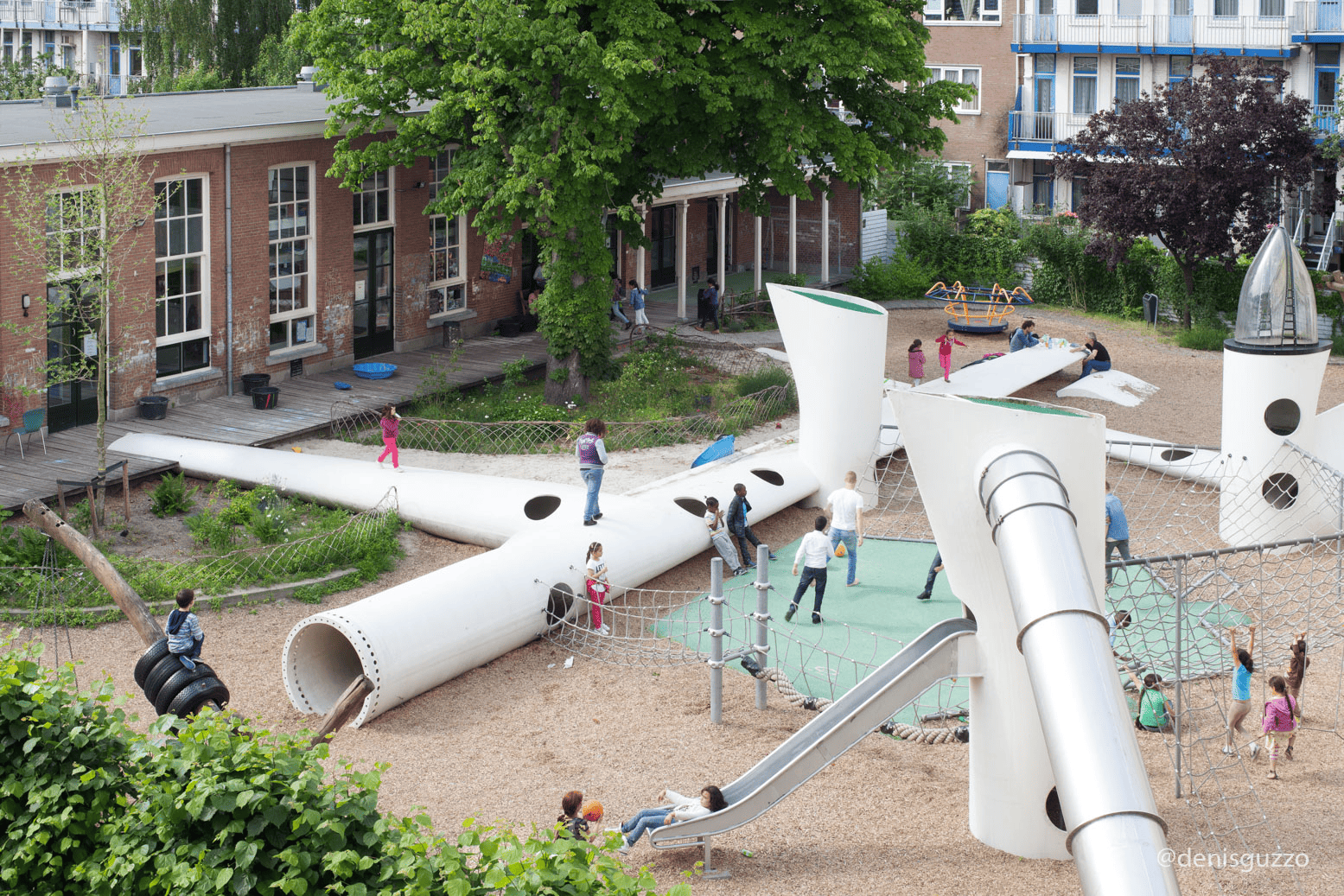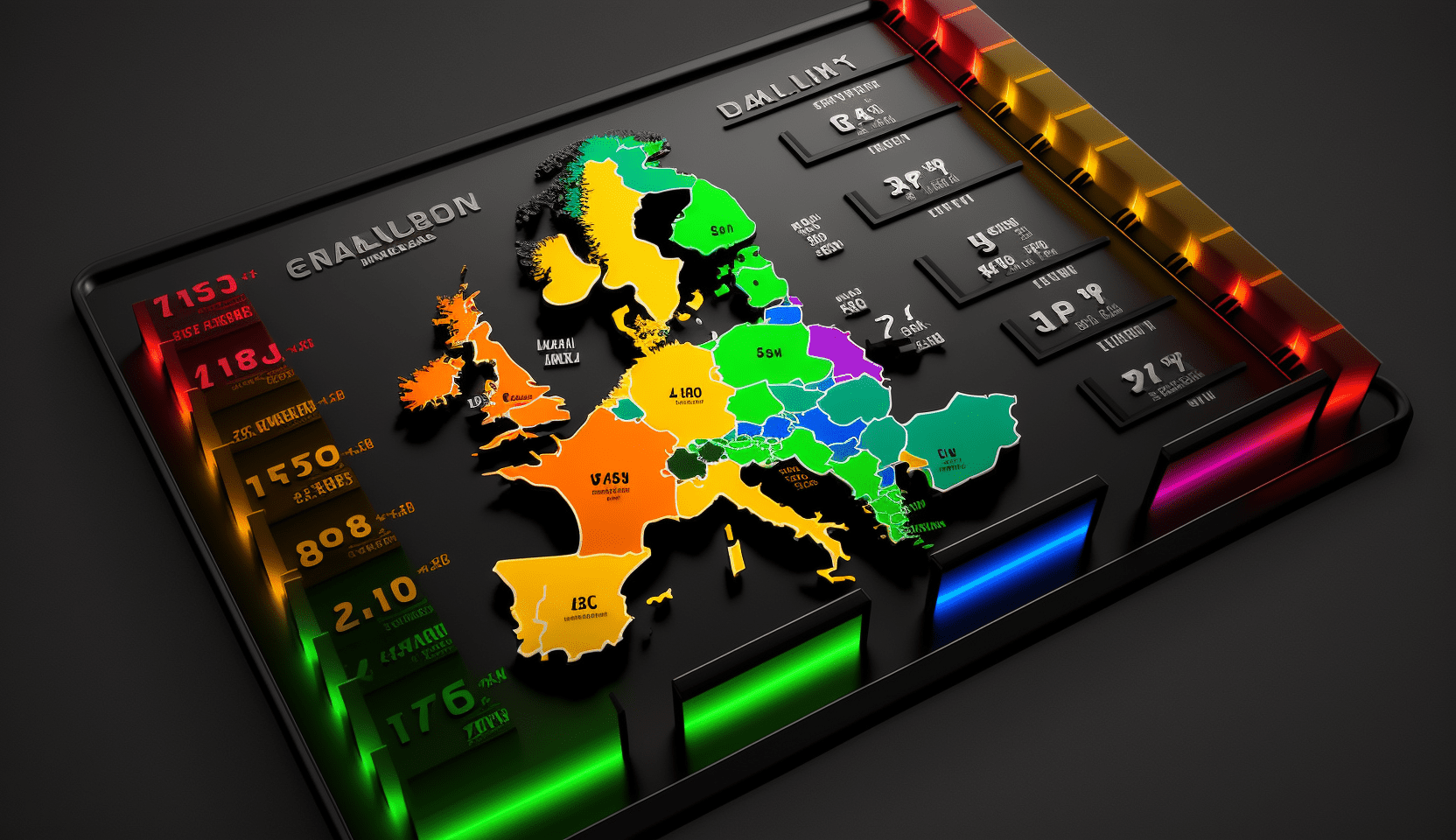
Innovation Origins regularly talks to ‘innovation leaders,’ trendsetters who are high up on the innovation ladder. In this series, they each offer a peek behind the scenes. Today Taavi Madiberk (32) has his say, he’s CEO of Skeleton Technologies, a company that produces ultracapacitors. An ultracapacitor supplies, saves and stores a massive amount of peak energy within a few seconds, which is then used, for instance, to start an engine or to slow it down. Ultracapacitors are used in industry (automotive and transport) and the energy sector, e.g. in the generation of sustainable electricity with wind turbines. Madiberk was featured on Forbes 30 under 30’s list of successful entrepreneurs back in 2016. Skeleton is aiming for an annual turnover of one billion euros by 2025 and has already almost succeeded. The company employs 127 people in two offices, in Estonia, and in Germany.
Who is Taavi Madiberk?
“I grew up in a small village outside the city of Naage, 30 kilometers from Tallinn, the capital of Estonia. Really quiet. When I was in the third grade, I went to a Waldorf school. That’s a type of school that encourages independent thinking from an early age. After the seventh grade, we moved to the capital, Tallinn. There I attended a school that specialized in sciences such as mathematics. That’s where I learned how life works from a mechanics and electronics perspective. But I also learned about which direction the world was heading in. I have been working ever since I was fourteen, after school, and sometimes even during school. I had several jobs and always felt driven to be entrepreneurial. In spite of that, I went to law school. But after my first internship for my studies, I realized that law was ‘not my cup of tea.’”
Then why did you study law?
“So as to have a firm basis in order to be able to work in business. When I chose that study, I only had a bit of background knowledge in science subjects. As it happens, I never graduated, even though I came close, because my entrepreneurial drive took over. I had already set up several companies and worked in large corporations and even NGOs. Since Estonia had just become independent from the Soviet Union in the 1990s, socialist society had come to an end. That opened up a lot of opportunities for young people for going into business.”
Was it because the market in Estonia still had to develop?
“Yes. After Estonia’s independence, our first Prime Minister was only 32 years old. Other skills were needed than in the days when Estonia was still a socialist sweatshop. That offered young people heaps of opportunities. During that time, I built up Estonia’s largest NGO. It was an organization of real estate owners of residential properties, etc. It grew from one thousand to 60,000 members. I also had an internet company that made, among other things, homepages for companies like newspapers. Plus, I was a co-founder of an online news company. I did two or three things at the same time. Estonia is a good starting point for young people who want to become entrepreneurs. Everyone started ‘from scratch’ in the 1990s.”
Because there was no established order in the business sector?
“Yes. When I was 24, I was already chair of the board of Estonia’s national railways. I had already done some consulting work for the Minister of Economic Affairs and then I became a supervisor there. After that I was appointed the managing director. The railways are normally not a sector for young people. Once, when I was on a business trip to Germany, someone in his fifties or sixties said: ‘Maybe your grandfather is the managing director, but you definitely are not. In the end, he just acknowledged that he had to do business with me. But I wonder if he truly believed I was the director, ha ha ha. I was also on the supervisory board of one of Estonia’s largest real estate companies. The fundamental logic of corporations always remains the same; whether it’s an old company or a new one.”
What made you become an innovator?
“If you want to make an impact and you don’t have a lot of capital, you need to be innovative. On one hand, I had the drive to be entrepreneurial. On the other, I didn’t come from a wealthy family and had to pursue my own path. If you’re going to do something that others are already doing, then you won’t be making much of a difference. What I really liked about the development of ultracapacitors is that this technology really fascinates me. Because it has tremendous potential when it comes to tackling climate change. Obviously, I also had a particular background in the natural sciences. I remember seeing how the eyes of our co-founders – Dr. Leis and Dr. Perkson – lit up when they talked about their ultracapacitor technology. This enthusiastic spark that triggers so much motivation is one of the key aspects in getting a new product off the ground, no matter what. Especially during the early stages of the start-up, whenever plans don’t work out the way you thought they would.
But how did you manage to get Dr. Leis and Dr. Perkson’s innovation off the ground?
” We set out a timeline for achieving specific goals. Scientists usually don’t do this when they’re conducting their research. Given that they generally don’t have a precise reason why they might need to come up with an invention at a particular point in time. If you don’t do this, you run the risk that the product won’t go anywhere or that it may be finished too late. What is critical to the success of our innovation in the field of ultracapacitors is the combination of Dr. Leis and Dr. Perkson’s science and technology with Oliver’s [Ahlberg, co-founder, ed] and my start-up mentality and work methods.”
Did the development of Skeleton turn out differently from what you had expected?
“Our first office was tucked away in a corner of a science lab. That was only 40 square meters in size. If Oliver and I had worked in the manufacturing industry, then we would have known that it takes a long time to design components for sustainable energy generation (such as wind turbines) that are used to slow down and stop the turbine from going flat out and catching fire. That lengthy development time has not only to do with making the first ultracapacitor, like those used in wind turbines, or in suspension systems in cars for when they take corners, but also for designing the scale-up that these ultracapacitors produce. That took much more time than we had anticipated. But the impact of our final product was also much greater than we had predicted.”
So it took more time to invest in product development than what you had anticipated, although the return on investment was also much greater than expected?
“Yes.”
What was your father’s role when it came to founding Skeleton?
“My father worked at a private research institute together with Dr. Leis and Dr. Perkson. They were involved in the development of ultra capacitors and saw some great opportunities for bringing these to the market. But the crisis struck in 2008 and the research institute ran into problems. My father then saw that investment in the development of ultra capacitors was drying up and that this technology was in danger of being lost. Oliver and I took out as many personal loans as we could, and that’s when we set up Skeleton.”
How much did you have to borrow?
“The maximum we could borrow per person was about €300,000. Right from the outset, we were able to sign on a major client, the European Space Agency. It saw the value of our innovation. Then we also managed to secure our first bank loan, which was more than €200,000. Oliver and I personally had to underwrite this. We were forced to take a risk. There was no other way to do it. Which turned out to be the most rational approach. If you want to achieve something, you have got to take a risk. If we hadn’t done that, we would not be standing where we are right now.”
Can you briefly explain how the product is put to use?
“In cities like Mannheim or Warsaw, for example, ultracapacitors are used in electric trams that conserve a lot of energy by harnessing energy from braking and reusing it to accelerate. In Estonia, there is a trial with buses that can recharge ultracapacitors at bus stops in a matter of seconds. It is not a replacement for the battery but rather a supplement to it. An ultracapacitor can instantly generate a huge amount of energy to start up an engine, for one thing. You can also use the ultracapacitor to handle peak loads in grid network applications. This does not affect the battery. It actually lasts longer this way and has a smaller footprint.”
Have you found yourselves in a growth market with Skeleton?
“Yes. Cities need to start emitting less CO2. But ports must become green as well. Ultracapacitors can be used there too. Or in automated warehouses where robots are required to pack goods and place them on pallets. The warehouse robots can recharge themselves along their routes within seconds. The ultracapacitor is a great solution for the automotive industry too. Few people know that there are still old-fashioned lead-acid batteries in cars, alongside lithium-ion batteries. Lead is heavy. So, if you want to use a smaller lead-acid battery, the car invariably becomes lighter. When it comes to electric cars, less weight means a longer range. On top of that, lead is also toxic. No toxic material is needed to manufacture an ultracapacitor. Technology and innovation are crucial in combating climate change. And I’m not talking about future technological breakthroughs – I’m talking about today’s technology, like Skeleton’s ultracapacitors.”
Isn’t the raw material for capacitors, graphene, extremely expensive?
“We use a composite material. That’s much cheaper than graphene. Our ultracapacitors perform much better because we use ‘curved’ graphene, a material that we have patented and researched using nanotechnology. Curved graphene differs significantly from regular activated carbons. This is what makes us stand out from the competition. In 2009, we started out as a company specializing in materials, such as those used in lithium-ion batteries, hydrogen storage, and actuators in synthetic muscles. The researchers had been working on these types of things. During the first meeting, it transpired that there are eight markets with potential worth billions. Oliver and I came in as outsiders with a background in IT, among other things. We then analyzed which of the applications had the greatest potential and were already closest to the market. We developed the material that Dr. Leis and Dr. Perkson had invented for just one application: the ultracapacitor. We never thought: one size fits all. This is the material that should make the ultracapacitor a real success.”
Is the secret to Skeleton’s success the development of this composite material?
“The material is definitely an important factor in this. But the real secret lies within our people. Youthful ambition alone isn’t enough. You also need experience. Otherwise you don’t have a steep learning curve.”
How do you see Skeleton’s future?
“Our goal for 2025 was to reach a turnover of one billion euros. We have already almost reached that. We have contracts worth €100 million with various companies. Not so long ago, we signed a contract with a car manufacturer. Climate change and sustainable energy are not going to go away. I see so much potential for Skeleton to come up with and offer solutions to so many clients! The possibilities are massive. What we do is worthwhile. Back in 2009, I would never have believed that we would become so huge. If you had told me that then, I would have said you were completely crazy. But I would still love to do this interview in ten years’ time to see where we stand then!”







